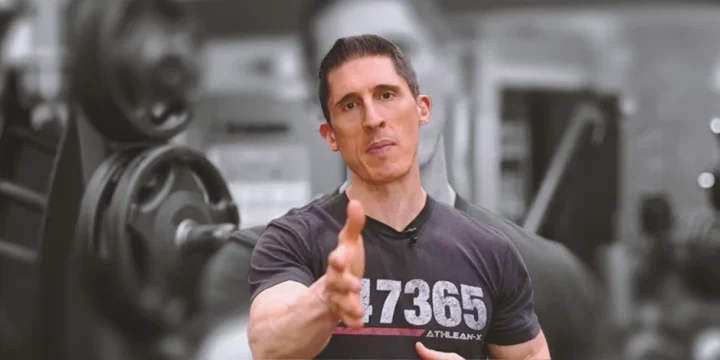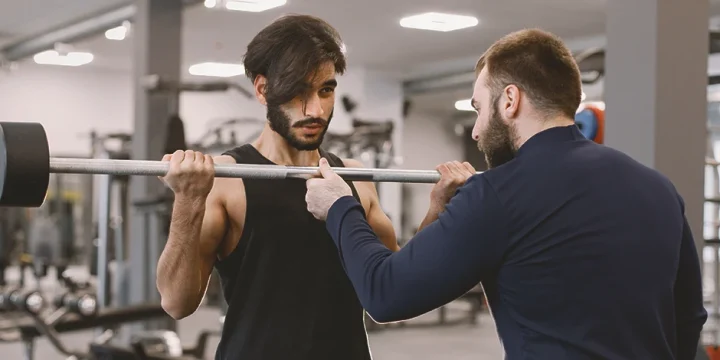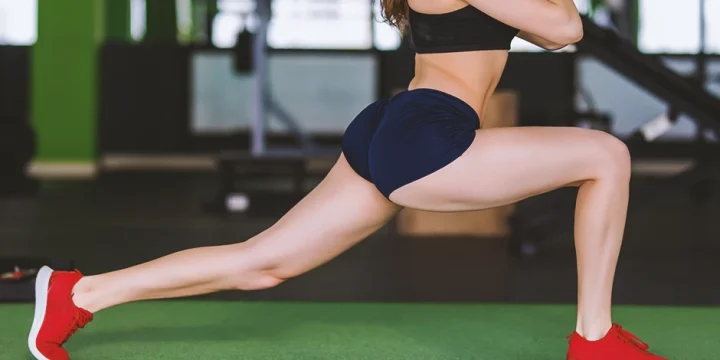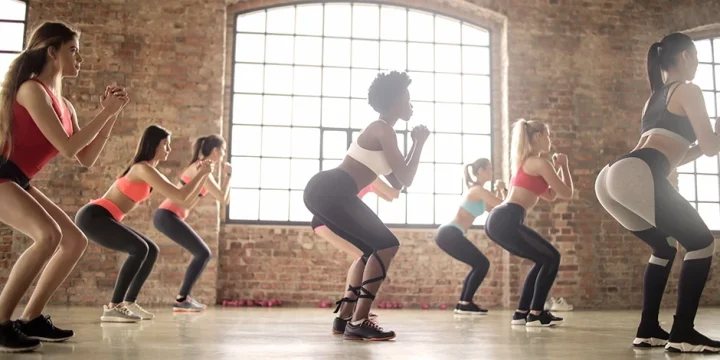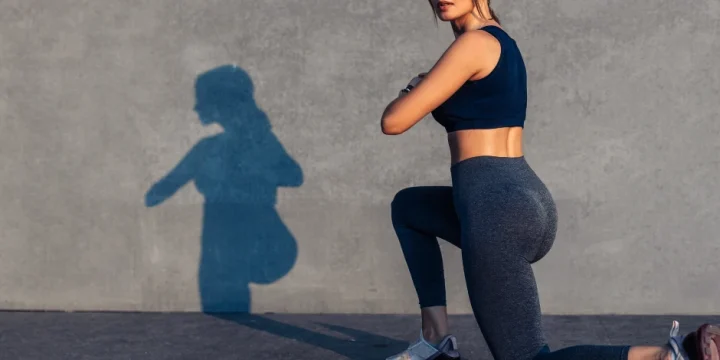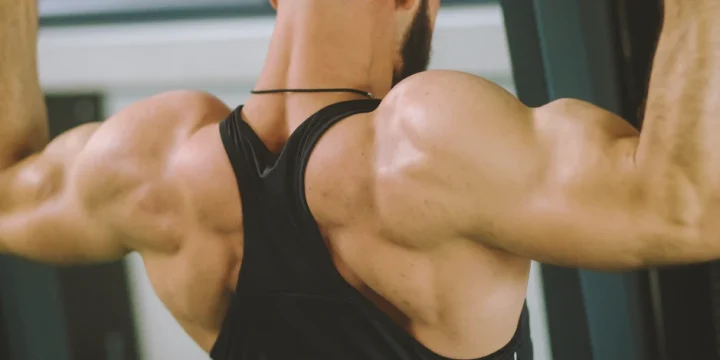When it comes to building an aesthetic physique or staying in great shape, there’s a science behind structuring your workouts for the best results.
A deep dive into two popular training splits — upper-lower and push-pull-leg — reveals unique advantages each of them brings to your fitness goals.
As a fitness professional with over a decade of experience, I've guided hundreds of clients and readers through these splits, uncovering their nuances and potentials.
In this article, we’ll dissect these training programs and help you figure out which one to choose.
Quick Summary
- A significant number of fitness enthusiasts and trainers lean towards the push-pull-legs split due to its emphasis on specific muscle groups, often resulting in enhanced muscle hypertrophy and strength.
- The upper-lower split focuses on exercises that training muscles in the upper and lower body; the PPL training split uses exercises based on pushing movements, pulling movements, and legs.
- According to insights from the National Institutes of Health (NIH), if not carefully managed, the high-intensity nature of push-pull-legs may lead to overtraining, risking injury and burnout.
- In my personal opinion, the push-pull-legs split offers a more dynamic and thorough approach for those seeking to intensify their training and achieve specific muscle development goals.
Upper-Lower Split vs. Push-Pull-Legs

Before diving into what exercises these splits cover, let’s first understand how they work.
What Is an Upper-Lower Split?
The upper-lower split, commonly called ULUL, is a training style that divides your week's workout routine into upper body (U) and lower body (L) sessions.
The ULUL split is usually divided into four days a week, where two days are dedicated to upper body exercises and the other two for the lower.
A frequently-used structure follows a "U, L, Rest, U, L, Rest, Rest" format, giving you plenty of recovery time between workout sessions.
Here’s what the split looks like:
- Monday: U
- Tuesday: L
- Wednesday: Rest
- Thursday: U
- Friday: L
- Saturday & Sunday: Rest
Learn more: Best 4-Day Workout Split to Build Strength and Muscle
What Is a Push-Pull-Legs Split?
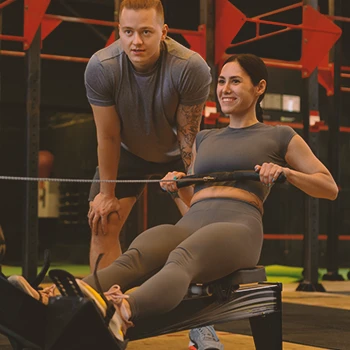
The push-pull-legs (PPL) split is a training split that divides your workouts into three workout sessions: push exercises, pull exercises, and leg exercises.
It involves six training days a week, each of which alternate between push (Ps), pull (Pl), and leg (L) workout sessions.
A commonly used format is "Ps, Pl, L, Rest, Ps, Pl, L." This routine is popular for intermediate and advanced lifters who want to increase their training frequency and intensity.
This training style allows you to focus on major muscle groups, allowing you to correct muscle imbalances, tweak your training volume, and develop more balance with muscle mass and strength gains.
I don’t recommend the push-pull-legs routine for beginners because it has only one rest day per week.
Here’s what the split looks like:
- Monday: Push
- Tuesday: Pull
- Wednesday: Legs
- Thursday: Rest
- Friday: Push
- Saturday: Pull
- Sunday: Legs
“Although there are numerous ways to pair muscle groups to work with a 3-day split, one of the most effective is also known as a push/pull/legs split.”
- Dr. Jim Stoppani, Exercise Physiologist
You May Also Like: Beginner Push Pull Legs PDF
Best Exercises For These Splits

Based on years of experience, we’ve handpicked some of the best exercises for both training rotuines.
Upper-Lower Training Exercises
Based on my research, compound exercises are some of the best movements to incorporate into your upper-lower split because they work more than one muscle group.
Here are a list of the best exercises to incorporate into your ULUL training program:
Upper body
- Bench press
- Overhead press
- Pull-up
- Dip
- Row
Lower body
- Squats
- Deadlifts
- Lunges
- Calf raises (seated and standing)
Here’s what a basic training program would look like:
Upper body day (Mondays and Thursdays)
- Bench barbell press: 3 sets x 8–12 reps
- Overhead press: 3 sets x 8–12 reps
- Pull-ups: 3 sets x AMRAP (as many reps as possible)
- Dips: 3 sets x AMRAP
- Row: 3 sets x 8–12 reps
Lower body day (Tuesdays and Fridays)
- Squats: 3 sets x 8–12 reps
- Deadlifts: 1 set x 5 reps
- Lunges: 3 sets x 8–12 reps per leg
- Calf raise: 3 sets x 15–20 reps
Push-Pull Legs Exercises
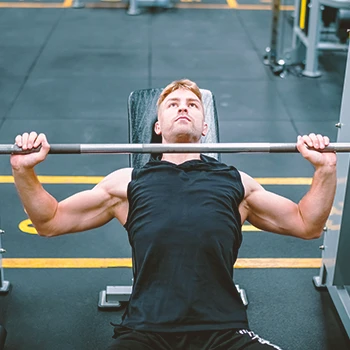
Since the PPL split is for intermediate and advanced lifters, there should be a combination of compound exercises (for every muscle group) and isolation exercise (for more detailed muscle work).
Here are a list of the best exercises to incorporate into your push-pull-legs training program.
Push
- Bench press
- Overhead press
- Incline dumbbell press
- Decline dumbbell press
- Dumbbell flys
- Triceps pushdowns
- Close-grip bench press
Pull
- Pull-ups
- Barbell rows
- Seated cable rows
- Lat pulldowns
- Bicep curls
- Hammer curls
Legs
- Squats
- Deadlifts
- Leg press
- Leg extensions
- Hamstring curls
- Calf raises
Here’s what a possible training program would look like:
Push day
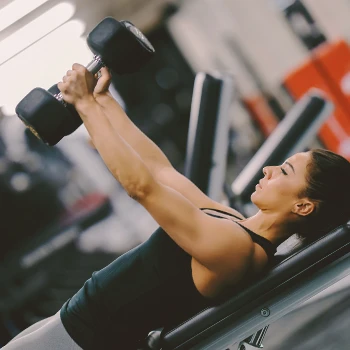
- Overhead press: 5 sets x 5 reps
- Bench barbell press: 5 sets x 5 reps
- Incline dumbbell press: 3 sets x 8–12 reps
- Decline dumbbell press: 3 sets x 8–12 reps
- Dumbbell flyes: 3 sets x 10–15 reps
- Triceps pushdowns: 3 sets x 10–15 reps
- Close-grip bench dumbbell press: 3 sets x 8–12 reps
Pull day
- Deadlifts: 5 sets x 5 reps
- Pull-ups: 3 sets x AMRAP
- Barbell rows: 3 sets x 8–12 reps
- Seated cable rows: 3 sets x 10–15 reps
- Lat pulldowns: 3 sets x 8–12 reps
- Bicep curls: 3 sets x 10–15 reps
- Hammer curls: 3 sets x 10–15 reps
Leg day
- Squats: 3 sets x 5 reps
- Leg press: 3 sets x 10–15 reps
- Leg extensions: 3 sets x 10–15 reps
- Hamstring curls: 3 sets x 10–15 reps
- Calf raises: 3 sets x 15–20 reps
Pros and Cons
In this section, we’ll dive into the major pros and cons of both training splits.
Upper Lower Training Program

Here are the pros of doing upper-lower splits:
- Beginner friendly: The balanced approach of this split allows you to evenly target all major muscles and build starting strength.
- Easy to follow: The upper lower split is a no-brainer because it requires you to be familiar with only two training sessions.
- Customizable: You can customize the upper-lower split to accomodate your specific fitness goals.
- More rest: The upper-lower split gives you more rest days. You can use these days to engage in active rest (by swimming or brisk-walking), HIIT cardio, or yoga sessions.
Here are the cons of doing upper-lower splits:
- Muscle imbalance: If you don’t carefully design your ULUL routine, you could potentially miss out on an important muscle group and end up with insufficient gains.
- Limited workout frequency: Depending on your genetics or rate of recovery, training only four times a week might not produce optimal muscle hypertrophy.
- Not enough specialization: The ULUL split might not be the best option to target a specific muscle group or specialize in specific lifts.
Push-Pull Legs Program

Here are some of the pros of doing push-pull-legs:
- Focus on movement patterns: This split improves functional strength, allowing you to develop a balanced physique and better movement efficiency.
- Highly customizable: The program can be adapted to suit individual fitness goals.
- Scalable: Regardless of your fitness level, the push-pull-legs splits can be modified to meet your evolving needs and objectives.
- High training frequency: By cycling through muscles, PPL allows for more frequent training, boosting muscular endurance and strength.
- Muscle-group training: This program emphasizes specific muscle groups, promoting greater muscle hypertrophy and definition.
Here are the cons of doing push-pull-legs:
- Danger of overtraining: According to insights from the National Institutes of Health (NIH), if not carefully managed, the high-intensity nature of this split may lead to overtraining, risking injury and burnout [1].
- Low recovery: Based on the information from the Better Health Channel, due to frequent training sessions, your body might struggle with inadequate recovery time, which might impair progress [2].
- Time commitment: This split demands substantial commitment, often requiring six training days per week, which might not be suitable for everyone.
Related: Best Push Pull Workout Split
How To Decide Which One’s Best For You

Your fitness level, goals, and schedule will determine whether you choose push-pull-legs or upper-lower splits.
Beginners and intermediate lifters who want to train four days a week should consider an upper-lower split training program.
The routine hits all of your major lower and upper body muscle groups twice per week, which is important for muscle growth in beginners.
Push-pull-legs is a good option for intermediate and advanced lifters.
This split can help you strengthen and improve the performance of your preferred muscle groups.
If you are a beginner, I highly recommend starting with an upper-lower split. It’s a more efficient way to train, and it will help you avoid overtraining.
Once you have reached an intermediate level, you can switch to a push-pull-legs splits if you want to focus on specific muscle groups.
FAQs
Is an Upper-Lower Body Split Effective?
Yes, an upper-lower body split is effective. This split allows you target every major muscle group, allowing you to provide enough stimulation for optimal muscle growth. Based on how this split is structured, it also allows your muscles to recover effectively during the week.
What Are the Disadvantages of Push-Pull-Legs Split?
The disadvantages of push-pull-legs split is that it’s not the most beginner-friendly training program. If not structured properly, a PPL split might lead to muscle overuse injuries and impede your fitness progress.
References:
- https://pubmed.ncbi.nlm.nih.gov/1623894/
- https://www.betterhealth.vic.gov.au/health/healthyliving/resistance-training-health-benefits
About The Author
You May Also Like
